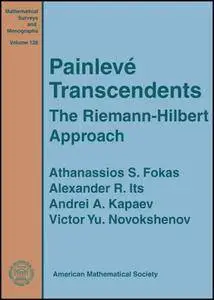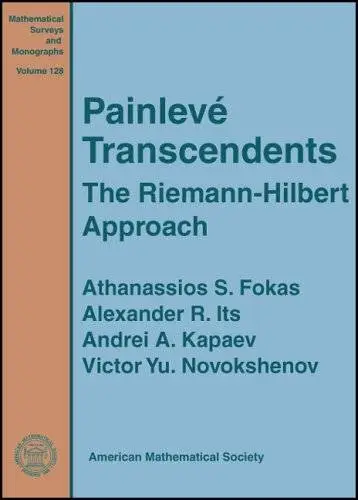Painleve Transcendents: The Riemann-hilbert Approach (Mathematical Surveys and Monographs) by Athanassios S. Fokas
English | 2006 | ISBN: 082183651X | 560 Pages | DJVU | 4.74 MB
English | 2006 | ISBN: 082183651X | 560 Pages | DJVU | 4.74 MB
At the turn of the twentieth century, the French mathematician Paul Painlevé and his students classified second order nonlinear ordinary differential equations with the property that the location of possible branch points and essential singularities of their solutions does not depend on initial conditions. It turned out that there are only six such equations (up to natural equivalence), which later became known as Painlevé I-VI. Although these equations were initially obtained answering a strictly mathematical question, they appeared later in an astonishing (and growing) range of applications, including, e.g., statistical physics, fluid mechanics, random matrices, and orthogonal polynomials. Actually, it is now becoming clear that the Painlevé transcendents (i.e., the solutions of the Painlevé equations) play the same role in nonlinear mathematical physics that the classical special functions, such as Airy and Bessel functions, play in linear physics. The explicit formulas relating the asymptotic behaviour of the classical special functions at different critical points play a crucial role in the applications of these functions. It is shown in this book that even though the six Painlevé equations are nonlinear, it is still possible, using a new technique called the Riemann-Hilbert formalism, to obtain analogous explicit formulas for the Painlevé transcendents. This striking fact, apparently unknown to Painlevé and his contemporaries, is the key ingredient for the remarkable applicability of these "nonlinear special functions". The book describes in detail the Riemann-Hilbert method and emphasizes its close connection to classical monodromy theory of linear equations as well as to modern theory of integrable systems. In addition, the book contains an ample collection of material concerning the asymptotics of the Painlevé functions and their various applications, which makes it a good reference source for everyone working in the theory and applications of Pa



